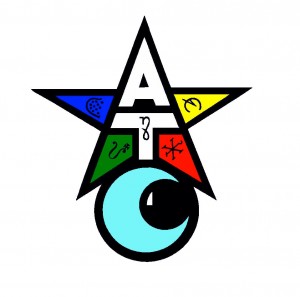Despite the strong countercultural thread that runs through many Pagan religions, there has long been a concurrent drive to develop the infrastructure and tools of the overculture, and turn them to our own ends. Arguments over owning land, creating seminaries, forming churches and other not-for-profits have been hashed out for decades, and this will likely be the cause of lively discourse for many years to come.
At the same time, those in the community who do forge ahead with these projects continue to speculate why one idea might flourish and another fail. For example, some posit that Pagans are too poor to support these works or perhaps too cheap. Others claim that Pagans want all the nice things but don’t wish to pay for them. Still others assert that Pagans are scarred by the experiences of their birth religions and, therefore, will not donate to any cause which promises to lift up religious hierarchies.
![[Photo Credit: Kathryn Harper, Flickr]](https://wildhunt.org/wp-content/uploads/2014/11/268022096_e52a1c90e6_z-500x375.jpg)
[Photo Credit: Kathryn Harper, Flickr]
Online communication makes it easier to connect with donors. As a result, the internet has made older donation platforms more accessible, and allowed new ones to emerge. In recent years, crowdfunding platforms have become the method of choice to raise funds from the dispersed Pagan communities. Sites such as IndieGoGo, GoFundMe, and Kickstarter have not only helped individuals secure funding for everything from burial expenses to pilgrimages, but they have also become invaluable to organizations such as The Wild Hunt, which is bankrolled by its annual online fund drive. Indeed, the egalitarian nature of crowdfunding makes it a popular way to promote a cause or rally community members to support one of their own.
Crowdfunding sites provide tools for social engagement and promotion, making them the media darlings that garner a lot of visibility. One aspect of these platform’s popularity is that, for the most part, they do not discriminate about the worthiness or the motivation for a campaign. If someone can successfully promote making potato salad, it does not matter if that someone is an individual or a corporation; or whether that someone is seeking profit or not. This is particularly beneficial to the individual, because many other sources of money are closed to all but non-profits, which have the blessings of the national government. Here in the United States that means the approval under section 501(c)(3) of the Internal Revenue Code.

Logo Aquarian Tabernacle Church
Dusty Dionne marketing director for the Aquarian Tabernacle Church said that when it comes to raising money “we as Pagans can’t hold your immortal soul up against your wallet — we have to give you something in return.” To that end, ATC’s founder Pete Pathfinder was always seeking things that could be given in return for donations, such as cookbooks and The Other People, which took the text of an Oberon Zell article and transformed it into a parody of a Chick tract. Dionne said, “My job is to find something to give you, the Pagan,” in return for a donation.
During the last two years of his life, Pathfinder “grew increasingly concerned with the financial stability of the church,” Dionne recalled, and he spent considerable time “finding ways to raise money without badgering the community and trying to make them feel that it was their responsibility only.” Aware that many organizations don’t successfully transition beyond the founder’s death, Dionne is now focused on finding as many revenue streams as possible for the ATC.
Those include passive revenue streams, such as Kroger Community Rewards and Amazon Smile. The latter is a portal set up by Amazon.com that allows shoppers to direct 5% of their sales to a not-for-profit. and the former is a similar program for customers of Kroger’s and Fred Myers, which are regional grocery stores. Corporations benefit from such programs by creating goodwill in the community, providing tax write-offs, and increasing brand loyalty. Often the store’s presumed support of a particular cause alters shopping habits to match.

The Maetreum of Cybele’s building.
Another church which avails itself of the Amazon Smile program is the Maetreum of Cybele, which has long been raising money for an interminable court battle over the tax-exempt status of its property in the town of Catskill, New York. Neither the Maetreum nor the ATC has seen a lot of money streaming in from this source. Dionne said that ATC’s first check was for thirteen dollars and, according to Reverend Catherine Platine, “It yields a small amount of donations but also allows us to purchase for the Maetreum items from Amazon with a cash back. We haven’t really promoted them outside occasional reminders on our FB page.”
PayPal’s Giving Fund (formerly eBay’s Mission Fish) is an independent 501c3 organization that helps for-profit businesses set-up and maintain similar giving programs. Non-profits can register with the program in order to be listed as a potential recipient of donations. Covenant of the Goddess (CoG) has been a registered recipient with this program for several years and has received small donations through eBay purchases.
Corporations do other kinds of giving as well, such as those listed in the Whole Foods community giving program, which isn’t restricted to non-profits. In-kind donations of products and services can often be obtained through a conversation with a local store manager, or by completing a simple application, but typically some amount of advance notice is required. CoG took advantage of this program for its 2014 Merry Meet event in Atlanta. Whole Foods donated $50.00 worth of groceries, which were used to help feed attendees at its day-long leadership workshop.
A pattern for much of this corporate largesse is that it doesn’t fully hit the company’s bottom line. In-kind donations cost less than the retail value that’s declared, and anything that can be written-off softens the fiscal blow, and is frequently encouraged by bean-counters in the back office. Passive programs, such as Amazon Smile, only generate donations based on customer sales, which may not have ever happened without those fundraising programs. Many of the largest companies may match donations made to certain charities, or have employee giving programs, which provide a convenient mechanism for those donations (in the form of payroll deduction) to translate into regular checks sent to a chosen charity.
Perhaps the most alluring employee giving campaigns are those set up by the government itself, because there are a lot of people employed in public service. Mistakenly called “United Way campaigns,” because that charity was once the only administrator of such programs, these campaigns are generally created under the auspices of a governing body, but operate independently of it.
For example, in New York, a program called the State Employees Federated Appeal (SEFA) is run by a council of state employees and retirees, who divide the state into a number of regions, which are then managed by local volunteer committees. Each of those regions hires a fiscal manager – a non-profit organization – to work with the local committee in order to promote the campaign and ensure that the donations end up where they’re intended.
These programs have certain advantages and disadvantages. The main advantage is that it’s easy to receive a donation from employees of that government. But on the down side, if that government makes decisions which are unpopular with its employees,such as pay freezes and layoffs, it could impact what given. Donations can also dry up if employees feel that the charity is reflecting well upon an undeserving boss. In other words, these programs can be terribly political.
There are many local governments with campaigns, and about twenty states have them. However, the biggest one is the combined Federal campaign due to the large number of people who can potentially be reached. However, these campaigns all have different application standards and reporting requirements, which may not be worth the effort if there aren’t employees standing by ready to donate to a cause. The first step that any organization should take, with regards to government programs, is to find out how many members or supporters actually work for the body in question.
Even if all the necessary hoops are jumped through, donations are rarely received from anyone who isn’t actually asked to give one. No matter the size or structure of the organization, regardless of what tools are available for raising money, and whether or not that money is going to a non-profit or just someone trying to deepen a personal spiritual practice, there’s never going to be anything that replaces the need to ask.
The Wild Hunt is not responsible for links to external content.
To join a conversation on this post:
Visit our The Wild Hunt subreddit! Point your favorite browser to https://www.reddit.com/r/The_Wild_Hunt_News/, then click “JOIN”. Make sure to click the bell, too, to be notified of new articles posted to our subreddit.


Cherry Hill Seminary also accepts donations through Amazon Smile.
Readers may want to know that Cherry Hill Seminary also offers a fundraising course taught by a professional fundraising consultant who has raised millions of dollars around the country for all kinds of causes. This article is a good survey of vehicles for receiving donations, but really doesn’t discuss the human factors behind successful fundraising – maybe in a future column?
Even outside of the pagan context I found the links most helpful – Thank you. 🙂
As an aside, I’ve found that many pagans and spiritual folk struggle with their personal balance of acceptance and definition of materialism, the practical need to survive, and personal or spiritual worth in society’s context of all of the above.
Speaking of Cherry Hill Seminary, maybe it’s worth sharing the perspective of the founder of the online program and of the pastoral counseling department… I can say that my philosophy, and I think it was shared by Kirk White, our original director, was this:
Create a great service. Recruit the very best people you can to help build the vision, and listen to their ideas. Pay them as much as you can afford; pay yourself last, but enough to justify taking the time from your family. Charge as little as you can while still retaining great people to provide the service while you build your reputation; do not fear to charge as much as you need to, once that reputation has grown, in order to see it sustained.
In no way can I take credit for the thousand good things Cherry Hill Seminary has become since I left, ten years ago. But I think I helped build some good things into the DNA, with that very first course we offered online, cobbled together with whatever free online tools we could find at that time. I remember begging Judy Harrow and Macha NightMare to join that first class, comping them in for free so they would be part of it and give feedback on what was and wasn’t working…
And of course, they loved the vision so much they went on to become part of CHS themselves, sharing their knowledge and their enthusiasm with people all over the country. As the program grew, the number of people of real ability willing to contribute grew, too, and we worked hard to make sure that the people who were teaching for CHS were always appreciated and (as much as possible) fairly compensated for their time.
Any large organization will only last if it is supported by the time and energy of talented people. Talented people will not be able to give their work away for free–though they can be incredibly generous, if you are open with them about the vision and the financial model you’re working with.
Any organization needs to recognize that sustainability depends on making sure the people who do its work receive recognition, appreciation, and fair compensation. I’m clear that the teachers and leaders who have come after me have eclipsed my small contributions long ago… but I’ll take some small credit for entering the work, at least, with those values. I’m sure faculty still aren’t paid what they’re “worth”–that would probably be impossible, given the quality of teachers that teach there now.
But the continuing success of the organization tells me they are recognized for that worth, and that making the organization sustainable is still a central goal of the administration.
Certainly, I look at the work they do today, and I feel both proud and humbled, all at once.
It’s true that we wouldn’t be here today without your vision, Cat. Thank you for this excellent message.
Thanks for your kind words, Cat. I can also say that taking that class in Boundaries & Ethics that you first offered and recruited Judy Harrow and me to audit was one of the best courses of any kind I’ve ever taken. IMO, it should be required for any Pagan, regardless of whether they expect or intend to interact with the wider world as a public Pagan.
You recruited Judy and me, and then Judy convinced me, against all my countercultural inclinations, to go for accreditation. The underlying rationale for that, for me, is the fact that there are Pagans in the military who are often in perilous situations that may involve hostility within their own ranks from some of the more hard-core Xtians, many of whom happen to be military chaplains, and they deserve solid Pagan support. And underlying that is the fact that the U.S. military has the most stringent requirements for chaplaincy, so in order to provide spiritual support for Pagan servicepeople, Cherry Hill Seminary needed to seek accreditation. Plus, accreditation helps smooth the way in so many other areas of human endeavor.
Having said all this about the military, one might assume I’m inclined towards resolving disputes aggressively. I am not. However, I do support my sisters and brothers who choose this path, for the many, many, many reasons they do, including educational and travel opportunities.
One other mention: Cherry Hill Seminary is probably the only institution of higher learning in history that began with no endowments, nary a one. CHS survives on (1) fundraising efforts — we try not to burn you out with too frequent drives, but we always need money to operate — (2) a few supporters of greater means than most, (3) a dedicated Board, (4) volunteer staff (including department chairs), (5) moderately paid faculty, (6) one part-time paid Executive Director who holds it all together, (7) students who’ve trusted in our work and in what they may gain from pursuing education at CHS, and (8) the Pagan public.
We at CHS believe that the sustainability of the Pagan movement is fostered and reinforced by having an educated population inclined towards service of the commonweal. Or as it’s put on the CHS website: providing “education and practical training in leadership, ministry, and personal growth in Pagan and Nature-Based spiritualities.”
If you’re inspired by this Wild Hunt post, you can easily donate to CHS here:https://npo.justgive.org/cherryhillseminary
“Create a great service.”
This is also one way to build membership or a subscription to a newsletter. When I took over the Calendar for the CalTech Folk Music Society from the founder, Brian Toby, in the mid -80’s, I enlarged the calendar from maybe half a page to four, including regular events as well as concerts. I loved listening to Folkscene on KPFK, but Roz rattled off events much fater than I could capture them. I figured other listeners and folkies would like to have something stuck to their refrigerator, so that’s what I started compiling.
I built up a set of venues who wanted to be listed in our calendar. I called them every publishing period to get updates, and I presented the info in a way that made skimming a bit easier, using two different fonts (a serif and a sans-serif), bolding, and Italics.
Within a year, we were getting subscriptions because of the calendar. We had a great service.
I think it is great that we now have this technology of crowd sourcing that can bring together people/groups in need with generous people who want to contribute.
BTW, Terrance, I found a number of the state links are 404, so I’m not sure that they’ve decided to not continue the online fundraising or changed their web address.
Lots of good info here.